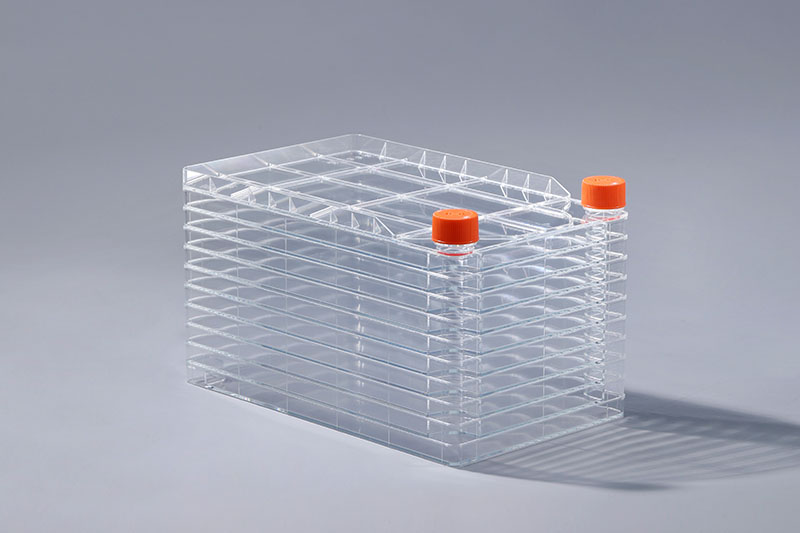With the in-depth development of the field of life sciences, cell culture technology is widely used in many fields such as biopharmaceuticals, industrial vaccine production, and monoclonal antibodies. According to the different ways of cell growth, it is divided into two categories: adherent cells and suspension cells. So which cells can be cultured using cell factories?
The cell factory is a multi-layer structure of cell culture consumables. Common specifications include 1 layer, 2 layers, 5 layers, 10 layers, 40 layers, etc. It is mainly used for the culture of adherent cells. The growth of adherent cells must have a support surface that can be attached, and cells can grow and reproduce on this surface by relying on the attachment factors secreted by themselves or provided in the culture medium. After the cells attach, they usually cover the culture surface within a few days and form a dense cell monolayer, such as Vero cells, HEK 293 cells, CAR-T cells, MRC5, CEF cells, porcine alveolar macrophages, myeloma cells, DF -1 cells, ST cells, PK15 cells, Marc145 cells, etc. were all adhered to the cell factory for culture.
In addition, this consumable can also be used for stationary culture of suspension cells. Suspension cells refer to cells that grow independently of the surface of the support and grow in suspension in the culture medium, such as lymphocytes.
Cell factories are generally produced from polystyrene raw materials, and the surface is hydrophobic. If it is used for adherent cell culture, the surface needs to be treated with TC to increase its hydrophilicity, which is suitable for cell adherent growth.
The FAI climbed 5.9 percent year-on-year in the first 11 months of 2018, quickening from the 5.7-percent growth in Jan-Oct, the National Bureau of Statistics (NBS) said Friday in an online statement.
The key indicator of investment, dubbed a major growth driver, hit the bottom in August and has since started to rebound steadily.
In the face of emerging economic challenges home and abroad, China has stepped up efforts to stabilize investment, in particular rolling out measures to motivate private investors and channel funds into infrastructure.
Friday's data showed private investment, accounting for more than 60 percent of the total FAI, expanded by a brisk 8.7 percent.
NBS spokesperson Mao Shengyong said funds into weak economic links registered rapid increases as investment in environmental protection and agriculture jumped 42 percent and 12.5 percent respectively, much faster than the average.
In breakdown, investment in high-tech and equipment manufacturing remained vigorous with 16.1-percent and 11.6-percent increases respectively in the first 11 months. Infrastructure investment gained 3.7 percent, staying flat. Investment in property development rose 9.7 percent, also unchanged.
 English
English



















































